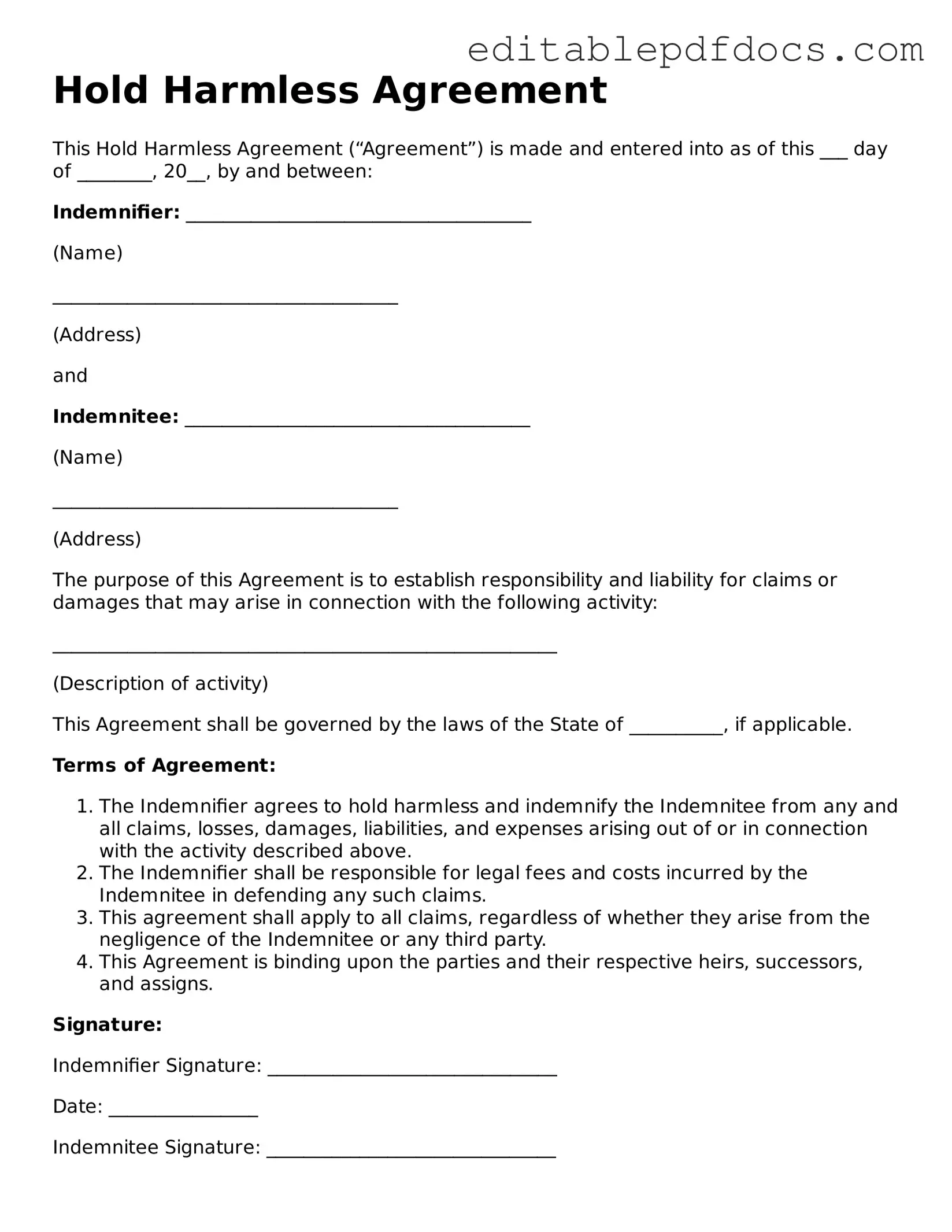When engaging in various activities, especially those that involve some level of risk, individuals and organizations often turn to the Hold Harmless Agreement form as a crucial protective measure. This form serves to outline the responsibilities and liabilities of the parties involved, ensuring that one party agrees to assume the risks associated with an activity and protects the other party from legal claims or damages. By signing this agreement, participants acknowledge the potential dangers and agree not to hold the other party accountable for any injuries or losses that may occur. It's commonly used in situations like events, construction projects, or recreational activities, where the risk of injury is higher. Understanding the key components of this agreement, including the scope of liability, indemnification clauses, and any exclusions, is essential for both parties to ensure clarity and fairness. Ultimately, a well-drafted Hold Harmless Agreement can foster trust and cooperation, allowing individuals and organizations to pursue their activities with greater peace of mind.
